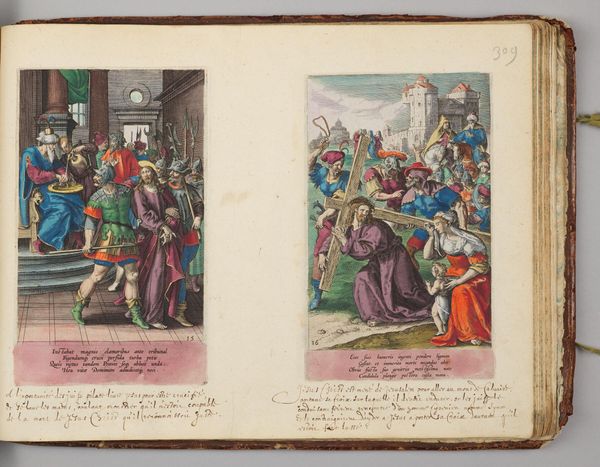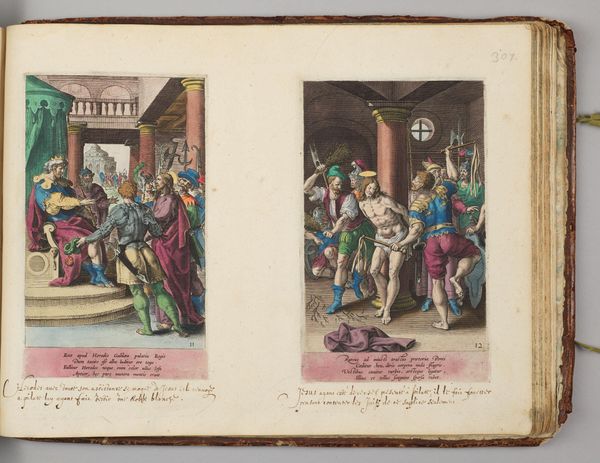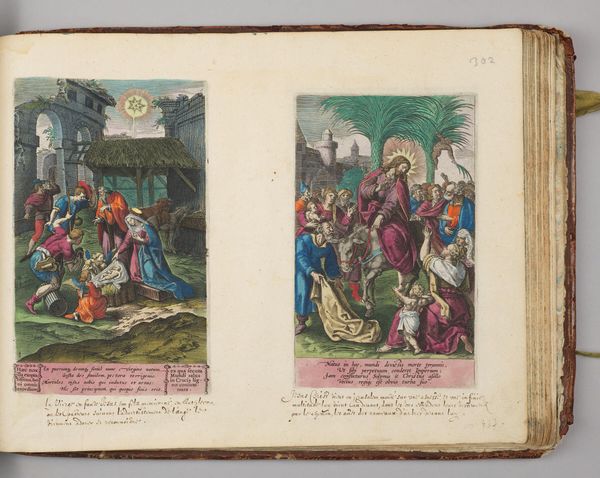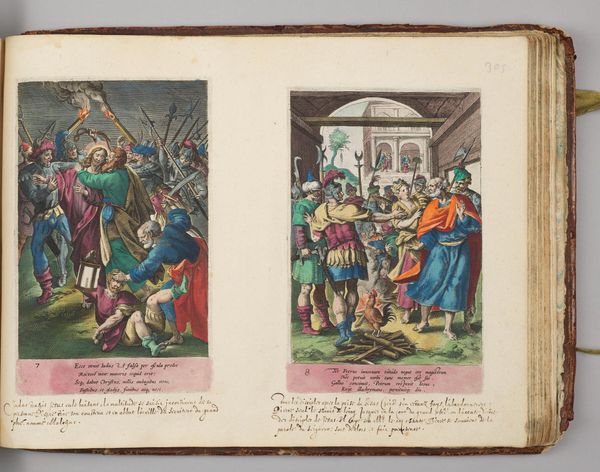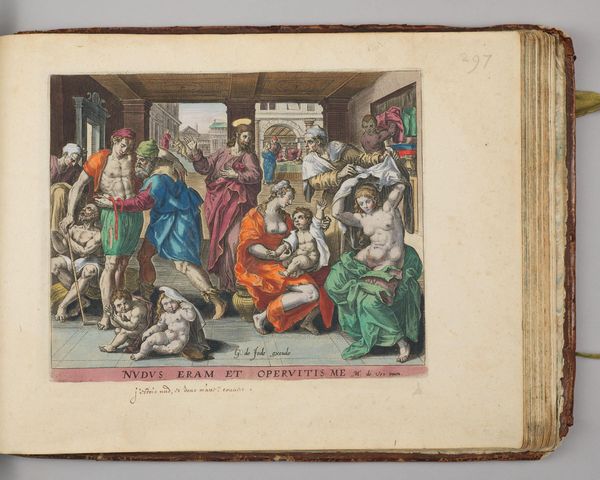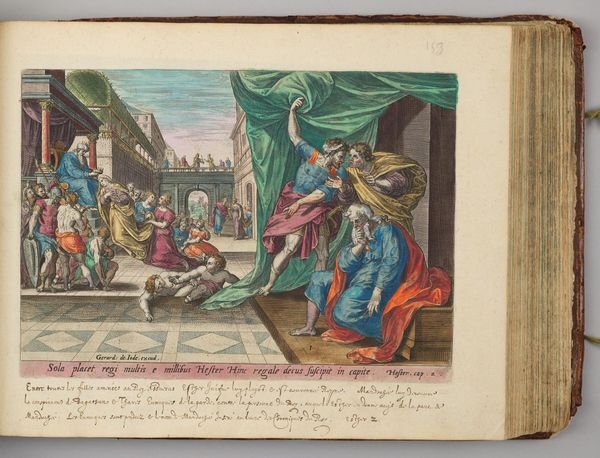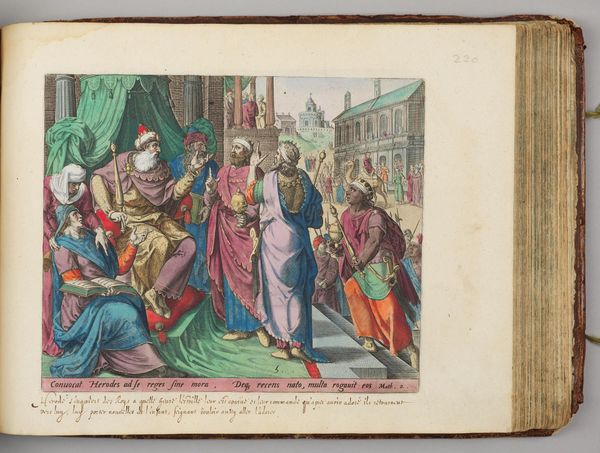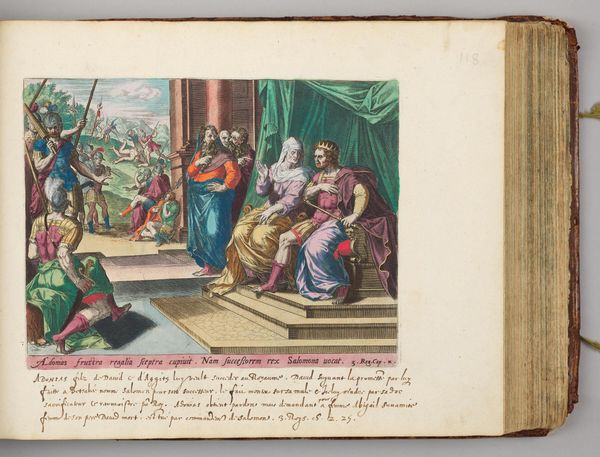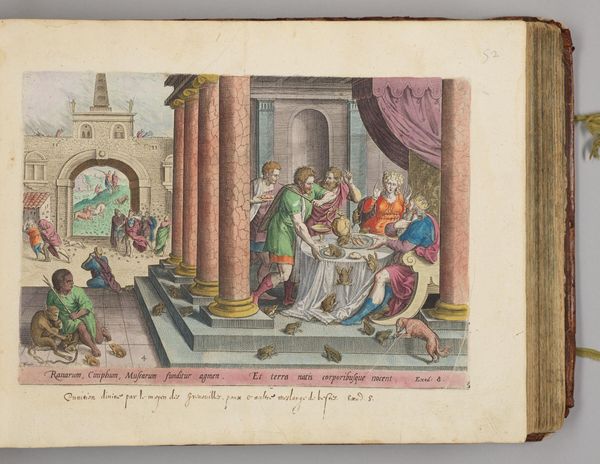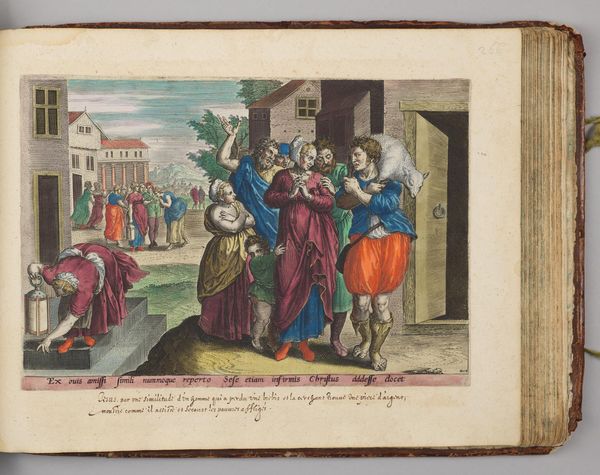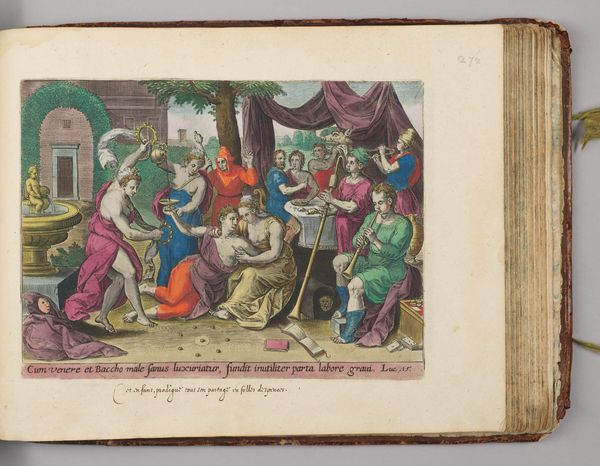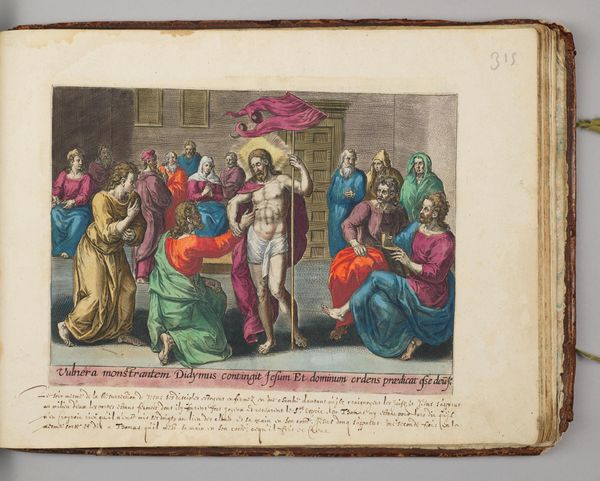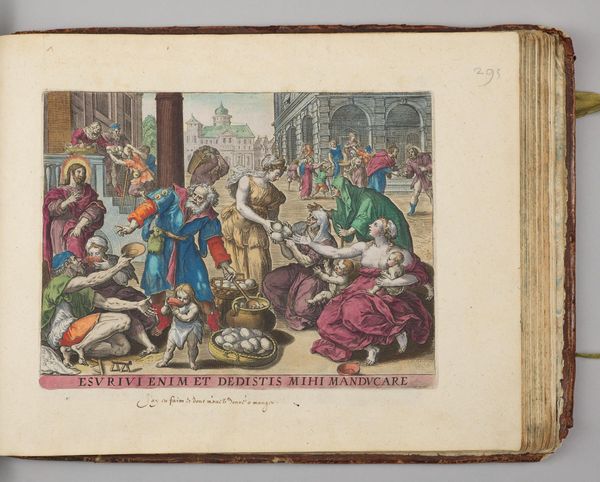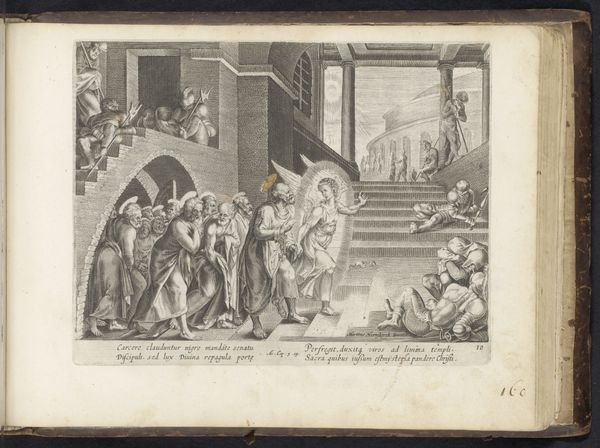
Dimensions: sheet: 27 x 36.4 cm (10 5/8 x 14 5/16 in.) left: 20.2 x 12.1 cm (7 15/16 x 4 3/4 in.) right: 20.3 x 12.6 cm (8 x 4 15/16 in.)
Copyright: CC0 1.0
Curator: Here we have a sheet from an album featuring two prints by Anton Wierix II, likely dating from the late 16th or early 17th century, titled "The Crowning with Thorns; Ecce Homo". Editor: My first impression is one of contained chaos, a sort of theatrical presentation of suffering rendered in miniature. The engravings are strikingly vivid, considering their age. Curator: Indeed. Wierix employs a dense visual vocabulary, packed with figures enacting familiar roles within the Passion narrative. The symbolism is overt, yet powerfully affecting. The crown of thorns, for instance, becomes a potent emblem of unjust authority and sacrificial suffering. Editor: I'm drawn to the compositional balance. The artist uses parallel structures, mirroring the architectural elements to frame the figures and control the eye’s movement within the limited space. Curator: Notice, too, how the architectural backdrops lend a sense of historical weight, evoking the Roman Empire's presence in the Holy Land. This contextualization deepens the narrative's resonance. Editor: The sharp, clean lines of the engraving technique highlight the brutal contrast between Christ's vulnerability and the soldiers' aggression. It’s quite effective. Curator: Absolutely. Wierix's choices serve to amplify the emotional impact of this pivotal moment in Christian history. Editor: A compelling look at suffering and power, captured with remarkable intensity.
Comments
No comments
Be the first to comment and join the conversation on the ultimate creative platform.
